Abstract
Hyperphenylalaninemias represent a major class of inherited metabolic disorders. They are most often caused by mutations in the phenylalanine hydroxylase gene and, less frequently but with usually more serious consequences, in genes necessary for the synthesis and regeneration of the cofactor, tetrahydrobiopterin. This cofactor is absolutely required for all aromatic amino acid hydroxylations, and, recently, nitric oxide production from L-arginine has also been found to be dependent on tetrahydrobiopterin. Phenylalanine hydroxylase catalyzes a coupled reaction in which phenylalanine is converted to tyrosine and in which tetrahydrobiopterin is converted to the unstable carbinolamine, 4a-hydroxytetrahydrobiopterin. The enzyme, carbinolamine dehydratase, catalyzes the dehydration of the carbinolamine to quinonoid dihydropterin. A decreased rate of dehydration of this compound has been hypothesized to be responsible for the production of 7-biopterin found in certain mildly hyperphenylalaninemic individuals. We have now identified nonsense and missense mutations in the 4a-carbinolamine dehydratase gene in a hyperphenylalaninemic child who excretes large amounts of 7-biopterin. This finding is consistent with the role of the carbinolamine dehydratase in the phenylalanine hydroxylation reaction. Together with previously identified inherited disorders in phenylalanine hydroxylase and dihydropteridine reductase, there are now identified mutations in the three enzymes involved in the phenylalanine hydroxylation system. In addition, the genetics of this system may have broader implications, since the product of the dehydratase gene has previously been shown to play an additional role (as dimerization cofactor for hepatocyte nuclear factor-1 alpha) in the regulation of transcription, through interaction with hepatocyte nuclear factor-1 alpha.
Full text
PDF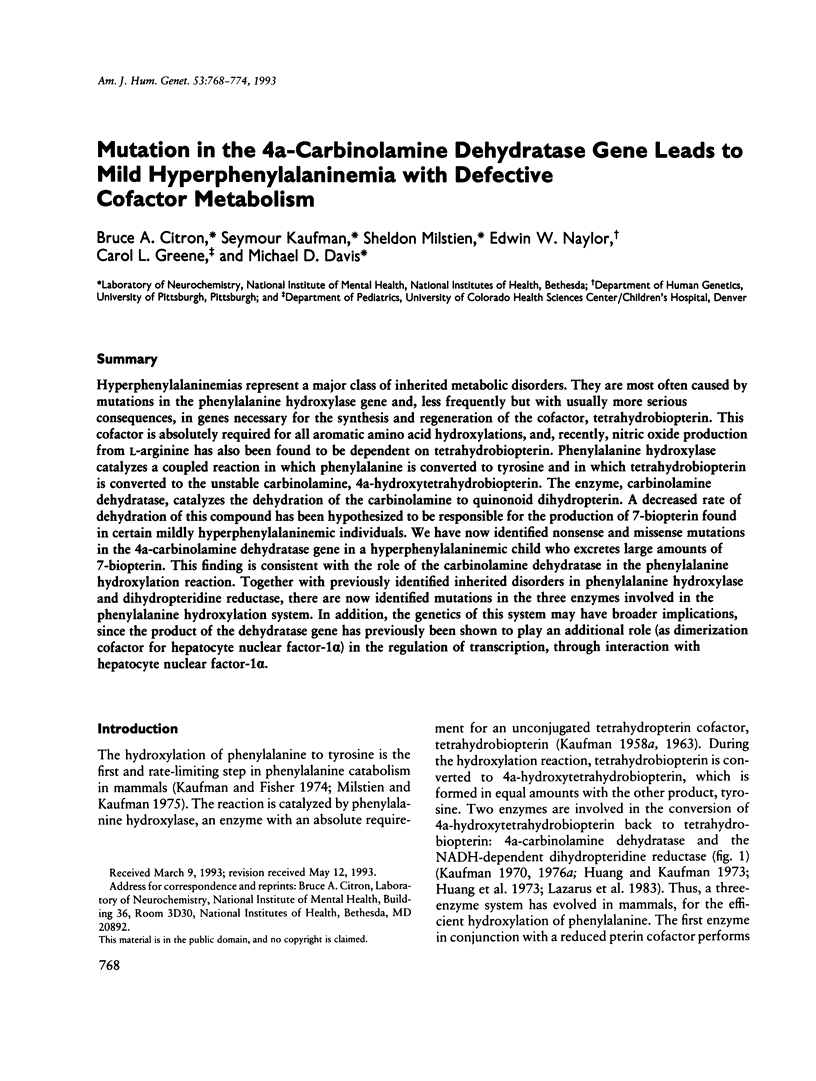
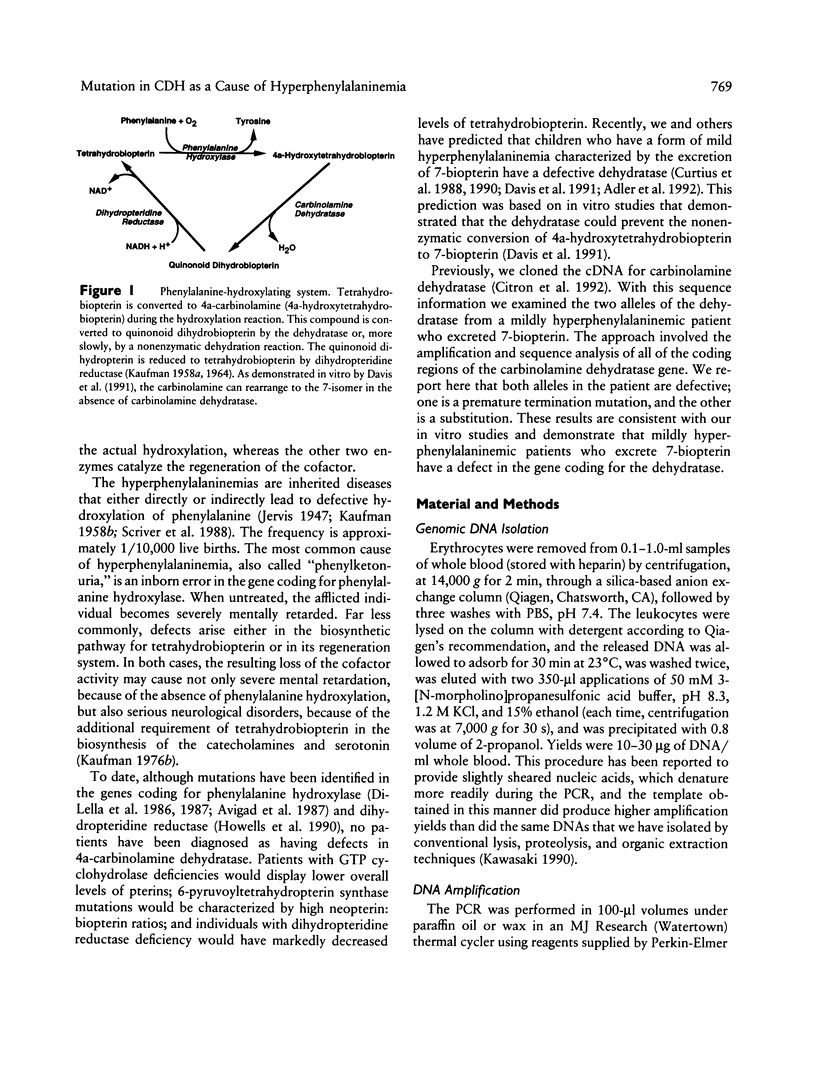
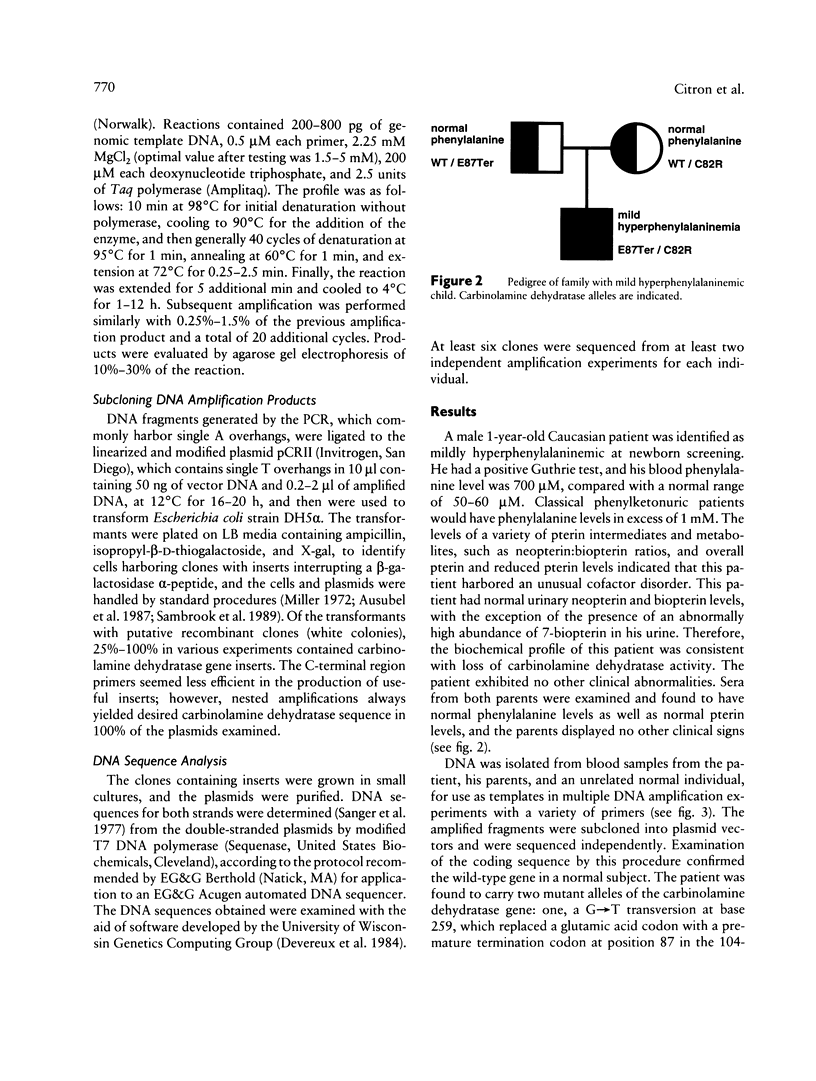
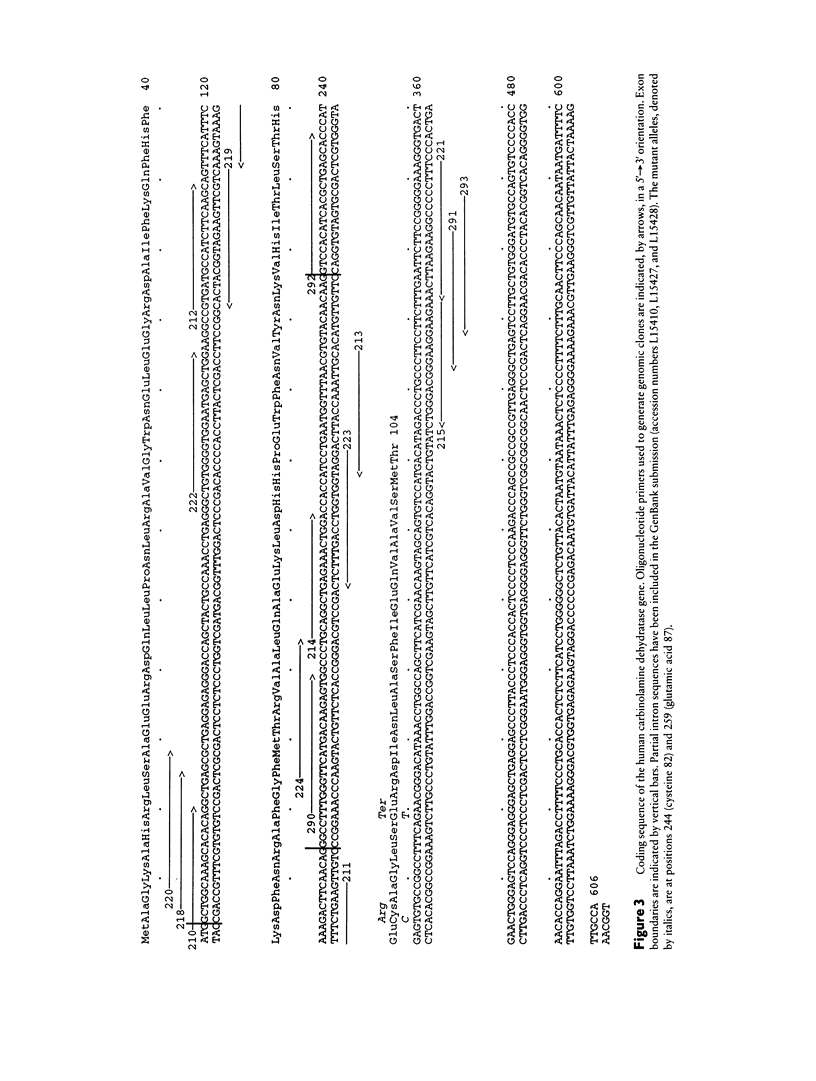
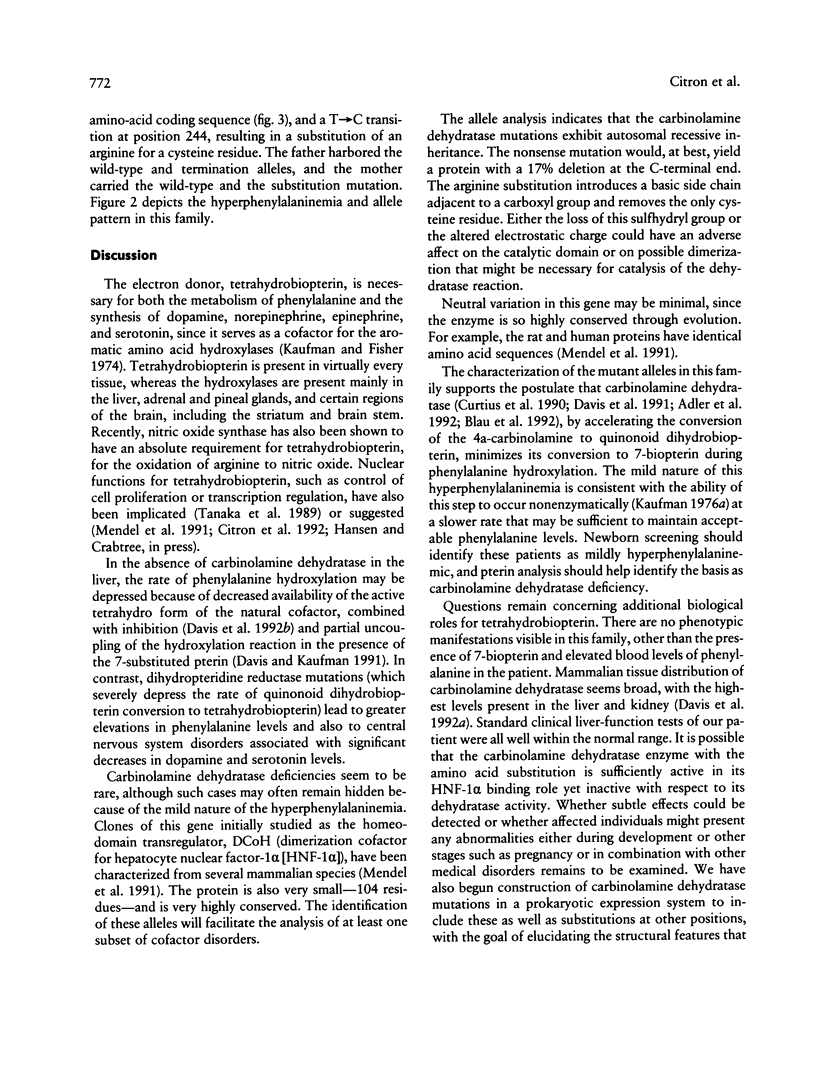
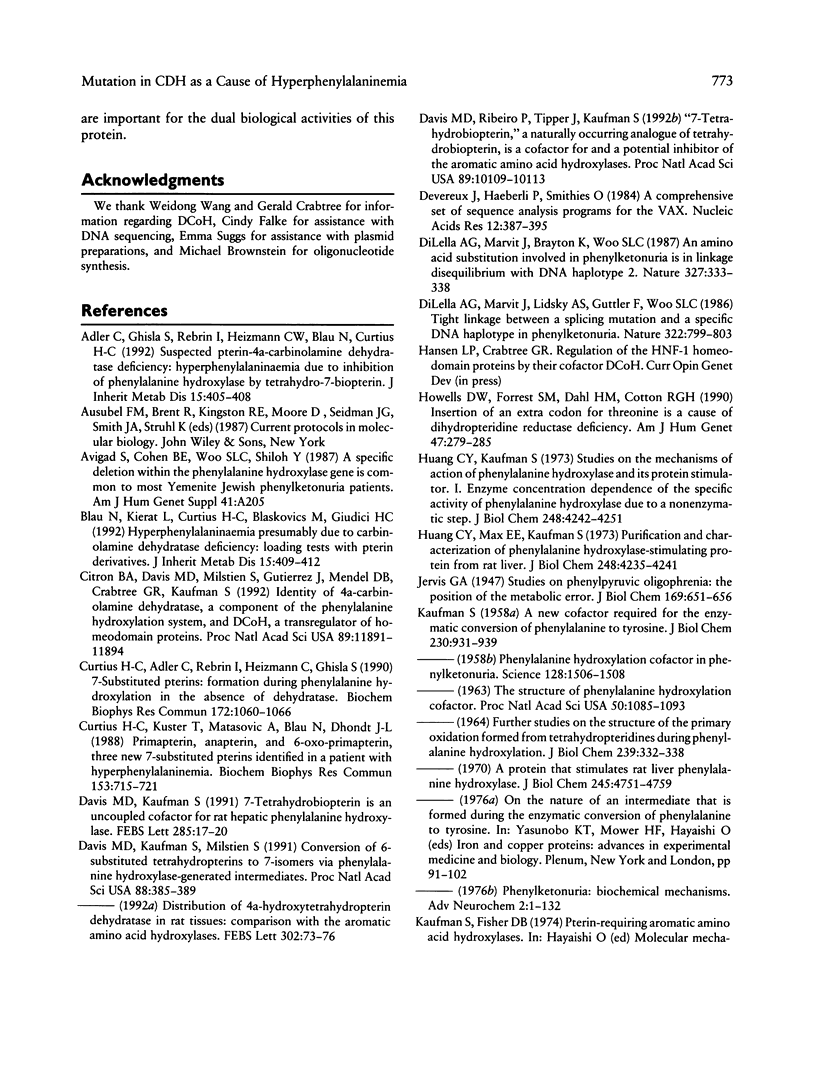
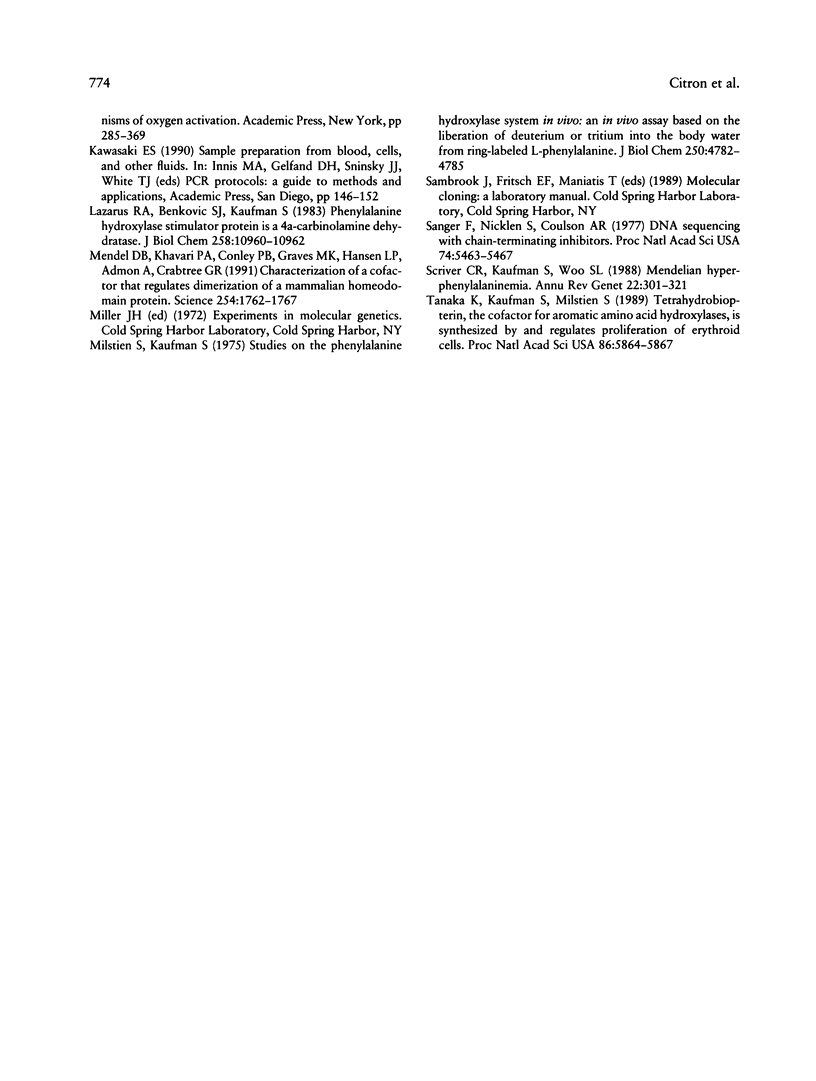
Selected References
These references are in PubMed. This may not be the complete list of references from this article.
- Adler C., Ghisla S., Rebrin I., Heizmann C. W., Blau N., Curtius H. C. Suspected pterin-4a-carbinolamine dehydratase deficiency: hyperphenylalaninaemia due to inhibition of phenylalanine hydroxylase by tetrahydro-7-biopterin. J Inherit Metab Dis. 1992;15(3):405–408. doi: 10.1007/BF02435989. [DOI] [PubMed] [Google Scholar]
- Blau N., Kierat L., Curtius H. C., Blaskovics M., Giudici T. Hyperphenylalaninaemia presumably due to carbinolamine dehydratase deficiency: loading tests with pterin derivatives. J Inherit Metab Dis. 1992;15(3):409–412. doi: 10.1007/BF02435990. [DOI] [PubMed] [Google Scholar]
- Citron B. A., Davis M. D., Milstien S., Gutierrez J., Mendel D. B., Crabtree G. R., Kaufman S. Identity of 4a-carbinolamine dehydratase, a component of the phenylalanine hydroxylation system, and DCoH, a transregulator of homeodomain proteins. Proc Natl Acad Sci U S A. 1992 Dec 15;89(24):11891–11894. doi: 10.1073/pnas.89.24.11891. [DOI] [PMC free article] [PubMed] [Google Scholar]
- Curtius H. C., Adler C., Rebrin I., Heizmann C., Ghisla S. 7-Substituted pterins: formation during phenylalanine hydroxylation in the absence of dehydratase. Biochem Biophys Res Commun. 1990 Nov 15;172(3):1060–1066. doi: 10.1016/0006-291x(90)91554-6. [DOI] [PubMed] [Google Scholar]
- Curtius H. C., Kuster T., Matasovic A., Blau N., Dhondt J. L. Primapterin, anapterin, and 6-oxo-primapterin, three new 7-substituted pterins identified in a patient with hyperphenylalaninemia. Biochem Biophys Res Commun. 1988 Jun 16;153(2):715–721. doi: 10.1016/s0006-291x(88)81153-7. [DOI] [PubMed] [Google Scholar]
- Davis M. D., Kaufman S. 7-Tetrahydrobiopterin is an uncoupled cofactor for rat hepatic phenylalanine hydroxylase. FEBS Lett. 1991 Jul 8;285(1):17–20. doi: 10.1016/0014-5793(91)80714-e. [DOI] [PubMed] [Google Scholar]
- Davis M. D., Kaufman S., Milstien S. Conversion of 6-substituted tetrahydropterins to 7-isomers via phenylalanine hydroxylase-generated intermediates. Proc Natl Acad Sci U S A. 1991 Jan 15;88(2):385–389. doi: 10.1073/pnas.88.2.385. [DOI] [PMC free article] [PubMed] [Google Scholar]
- Davis M. D., Ribeiro P., Tipper J., Kaufman S. "7-tetrahydrobiopterin," a naturally occurring analogue of tetrahydrobiopterin, is a cofactor for and a potential inhibitor of the aromatic amino acid hydroxylases. Proc Natl Acad Sci U S A. 1992 Nov 1;89(21):10109–10113. doi: 10.1073/pnas.89.21.10109. [DOI] [PMC free article] [PubMed] [Google Scholar]
- Devereux J., Haeberli P., Smithies O. A comprehensive set of sequence analysis programs for the VAX. Nucleic Acids Res. 1984 Jan 11;12(1 Pt 1):387–395. doi: 10.1093/nar/12.1part1.387. [DOI] [PMC free article] [PubMed] [Google Scholar]
- DiLella A. G., Marvit J., Brayton K., Woo S. L. An amino-acid substitution involved in phenylketonuria is in linkage disequilibrium with DNA haplotype 2. 1987 May 28-Jun 3Nature. 327(6120):333–336. doi: 10.1038/327333a0. [DOI] [PubMed] [Google Scholar]
- DiLella A. G., Marvit J., Lidsky A. S., Güttler F., Woo S. L. Tight linkage between a splicing mutation and a specific DNA haplotype in phenylketonuria. 1986 Aug 28-Sep 3Nature. 322(6082):799–803. doi: 10.1038/322799a0. [DOI] [PubMed] [Google Scholar]
- Howells D. W., Forrest S. M., Dahl H. H., Cotton R. G. Insertion of an extra codon for threonine is a cause of dihydropteridine reductase deficiency. Am J Hum Genet. 1990 Aug;47(2):279–285. [PMC free article] [PubMed] [Google Scholar]
- Huang C. Y., Kaufman S. Studies on the mechanisms of action of phenylalanine hydroxylase and its protein stimulator. I. Enzyme concentration dependence of the specific activity of phenylalanine hydroxylase due to a nonenzymatic step. J Biol Chem. 1973 Jun 25;248(12):4242–4251. [PubMed] [Google Scholar]
- Huang C. Y., Max E. E., Kaufman S. Purification and characterization of phenylalanine hydroxylase-stimulating protein from rat liver. J Biol Chem. 1973 Jun 25;248(12):4235–4241. [PubMed] [Google Scholar]
- KAUFMAN S. A new cofactor required for the enzymatic conversion of phenylalanine to tyrosine. J Biol Chem. 1958 Feb;230(2):931–939. [PubMed] [Google Scholar]
- Mendel D. B., Khavari P. A., Conley P. B., Graves M. K., Hansen L. P., Admon A., Crabtree G. R. Characterization of a cofactor that regulates dimerization of a mammalian homeodomain protein. Science. 1991 Dec 20;254(5039):1762–1767. doi: 10.1126/science.1763325. [DOI] [PubMed] [Google Scholar]
- Milstien S., Kaufman S. Studies on the phenylalanine hydroxylase system in vivo. An in vivo assay based on the liberation of deuterium or tritium into the body water from ring-labeled L-phenylalanine. J Biol Chem. 1975 Jun 25;250(12):4782–4785. [PubMed] [Google Scholar]
- Sanger F., Nicklen S., Coulson A. R. DNA sequencing with chain-terminating inhibitors. Proc Natl Acad Sci U S A. 1977 Dec;74(12):5463–5467. doi: 10.1073/pnas.74.12.5463. [DOI] [PMC free article] [PubMed] [Google Scholar]
- Scriver C. R., Kaufman S., Woo S. L. Mendelian hyperphenylalaninemia. Annu Rev Genet. 1988;22:301–321. doi: 10.1146/annurev.ge.22.120188.001505. [DOI] [PubMed] [Google Scholar]
- Tanaka K., Kaufman S., Milstien S. Tetrahydrobiopterin, the cofactor for aromatic amino acid hydroxylases, is synthesized by and regulates proliferation of erythroid cells. Proc Natl Acad Sci U S A. 1989 Aug;86(15):5864–5867. doi: 10.1073/pnas.86.15.5864. [DOI] [PMC free article] [PubMed] [Google Scholar]


